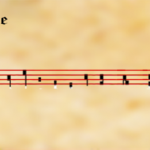My husband thinks this will be me, one day:
The hermitage isn’t what you’d expect: a small home in a quiet neighborhood of Essex, Maryland, that was originally built as a one-room fishing shack 100 years ago. But then, the hermit who lives there isn’t what you’d expect, either. Mary Zimmerer, now Sr. Maria Veronica of the Holy Face, is a bubbly widow who discerned a call to the contemplative life after her husband passed away five years ago. Having made a public profession of vows last fall, she is now one of only two canonical (or diocesan) hermits in the Archdiocese of Baltimore.
Margaret Cabaniss met with Sister Maria Veronica to find out what it’s like to live this ancient vocation in the modern age.
How did you discern the call to become a hermit?
Looking back, I could see that the call came a long time ago. I think the vocation is kind of like a puzzle — the Lord throws out these clues along the way, and you may or may not recognize the clues at the time.
In 1987, I made a silent retreat, and I thought the Lord wanted me to leave my husband and my son and join a religious community. And I just thought, “Well, Lord, you can tell my husband.” [laughs] When my husband came to pick me up after the retreat, the first thing out of his mouth was, “You don’t want to go, do you?” I told him no. He said, “Well, you have to come home with me, but if something ever happens to me, you can come back.” [laughs]
The Sunday after the retreat, I met a woman who was a member of the Third Order of St. Francis — the lay order of a religious community. I thought, “I need to know more about that,” and eventually I decided to become a member of the Secular Order of Discalced Carmelites, a contemplative order that has its roots in the hermits on Mt. Carmel. I was a secular Carmelite for 20 years.
After my husband died in July 2006, I knew that the Lord was calling me to a contemplative life, but where? Carmelites don’t have solitaries in the secular order, but because I felt this call, I looked into other religious communities. But some have age limits; some do not accept widows. I looked into the Carthusians; I visited the Camaldolese nuns, the Visitations, the Poor Clares; but each time I thought, “This is not where I’m supposed to be.”
I prayed, “Lord, where do you want me to go? What do you want me to do?” Eventually, I met a couple of hermits in Pennsylvania, and the more I talked with them, the more I could feel my heart jump for joy. I said, “I think I’m supposed to be a hermit. Now, what do I do with that?” I had to leave Carmel, which broke my heart, but the Father General [of the Carmelite order] explained: “You can’t have your foot in two religious communities at the same time.” Then it made sense to me: Even though this is not a religious community, you are becoming a religious.
I am very sure I am not being called to any such privilege, ever (I am hoping for the privilege of Grandchildren!) but if I were a hermit, I would of course wear red, which is the best color!
Read Margaret Cabaniss’ whole piece – it’s fascinating, and an increasing number of people are feeling called to hermitage.
Then again, with the world in such a state, we need all the folks devoted to prayer that we can get!










